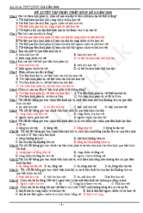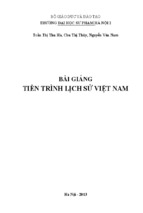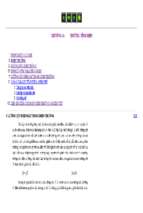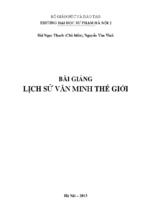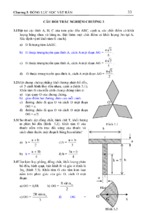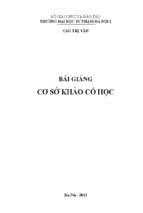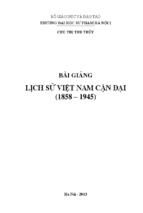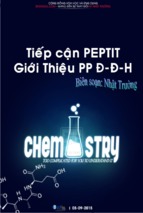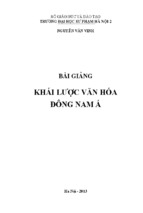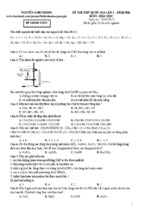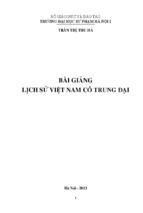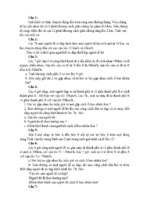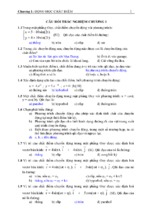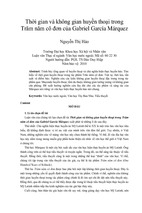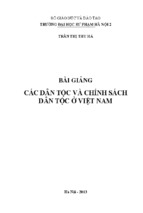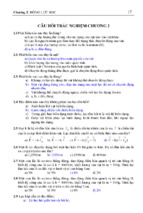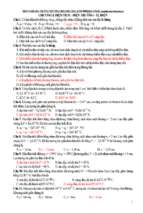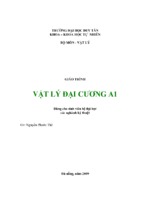Thomas Heinzel
Mesoscopic Electronics in Solid
State Nanostructures
Second, Completely Revised and Enlarged Edition
WILEY-VCH Verlag GmbH & Co. KGaA
This Page Intentionally Left Blank
Thomas Heinzel
Mesoscopic Electronics in Solid
State Nanostructures
Second, Completely Revised and Enlarged Edition
WILEY-VCH Verlag GmbH & Co. KGaA
1807–2007 Knowledge for Generations
Each generation has its unique needs and aspirations. When Charles Wiley first
opened his small printing shop in lower Manhattan in 1807, it was a generation
of boundless potential searching for an identity. And we were there, helping to
define a new American literary tradition. Over half a century later, in the midst
of the Second Industrial Revolution, it was a generation focused on building
the future. Once again, we were there, supplying the critical scientific, technical,
and engineering knowledge that helped frame the world. Throughout the 20th
Century, and into the new millennium, nations began to reach out beyond their
own borders and a new international community was born. Wiley was there, expanding its operations around the world to enable a global exchange of ideas,
opinions, and know-how.
For 200 years, Wiley has been an integral part of each generation’s journey,
enabling the flow of information and understanding necessary to meet their
needs and fulfill their aspirations. Today, bold new technologies are changing
the way we live and learn. Wiley will be there, providing you the must-have
knowledge you need to imagine new worlds, new possibilities, and new opportunities.
Generations come and go, but you can always count on Wiley to provide you
the knowledge you need, when and where you need it!
William J. Pesce
President and Chief Executive Officer
Peter Booth Wiley
Chairman of the Board
Thomas Heinzel
Mesoscopic Electronics in Solid
State Nanostructures
IV
The Author
Prof. Dr. Thomas Heinzel
Dept. of Solid State Physics
Heinrich-Heine-Universität Düsseldorf
[email protected]
All books published by Wiley-VCH are carefully
produced. Nevertheless, authors, editors, and
publisher do not warrant the information contained
in these books, including this book, to be free of
errors. Readers are advised to keep in mind that
statements, data, illustrations, procedural details or
other items may inadvertently be inaccurate.
Library of Congress Card No.:
applied for
British Library Cataloguing-in-Publication Data
A catalogue record for this book is available from
the British Library.
Bibliographic information published by
the Deutsche Nationalbibliothek
The Deutsche Nationalbibliothek lists this
publication in the Deutsche Nationalbibliogra e;
detailed bibliographic data are available in the
Internet at
.
© 2007 WILEY-VCH Verlag GmbH & Co. KGaA,
Weinheim
All rights reserved (including those of translation
into other languages). No part of this book may be
reproduced in any form – photoprinting, micro lm,
or any other means – transmitted or translated into
a machine language without written permission
from the publishers. Registered names,
trademarks, etc. used in this book, even when not
speci cally marked as such, are not to be
considered unprotected by law.
Typesetting Da-TeX Gerd Blumenstein, Leipzig
Printing Strauss GmbH, Mörlenbach
Binding Litges & Dopf GmbH, Heppenheim
Printed in the Federal Republic of Germany
Printed on acid-free paper
ISBN:
978-3-527-40638-8
Dedication
To Carola and Alexander
This Page Intentionally Left Blank
VII
Contents
Preface
XIII
1
1
Introduction
1.1
1.2
1.2.1
1.2.2
1.2.3
1.2.4
1.2.5
1.2.6
1.2.7
1.2.8
Preliminary remarks 1
Mesoscopic transport 2
Ballistic transport 3
The quantum Hall effect and Shubnikov–de Haas oscillations 5
Size quantization 7
Phase coherence 8
Single-electron tunneling and quantum dots 9
Superlattices 10
Spintronics 11
Samples, experimental techniques, and technological relevance 11
15
2
An update of solid state physics
2.1
2.2
2.3
2.3.1
2.3.2
2.3.3
2.3.4
2.4
2.5
2.6
2.6.1
2.6.2
Crystal structures 16
Electronic energy bands 18
Occupation of energy bands 27
The electronic density of states 27
Occupation probability and chemical potential 29
Intrinsic carrier concentration 29
Bloch waves and localized electrons 31
Envelope wave functions 32
Doping 36
Diffusive transport and the Boltzmann equation 40
The Boltzmann equation 41
The conductance predicted by the simplified Boltzmann
equation 44
The magneto-resistivity tensor 46
Diffusion currents 47
2.6.3
2.6.4
Mesoscopic Electronics in Solid State Nanostructures. Thomas Heinzel
Copyright © 2007 WILEY-VCH Verlag GmbH & Co. KGaA, Weinheim
ISBN: 978-3-527-40638-8
VIII
Contents
2.7
2.8
Scattering mechanisms
Screening 50
3
Surfaces, interfaces, and layered devices 57
Electronic surface states 59
Surface states in one dimension 59
Surfaces of three-dimensional crystals 65
Band bending and Fermi level pinning 67
Semiconductor–metal interfaces 68
Band alignment and Schottky barriers 69
The Schottky model 72
The Schottky diode 73
Ohmic contacts 73
Semiconductor heterointerfaces 74
Field effect transistors and quantum wells 77
3.1
3.1.1
3.1.2
3.1.3
3.2
3.2.1
3.2.1.1
3.2.1.2
3.2.2
3.3
3.4
3.4.1
3.4.1.1
3.4.2
3.4.3
3.4.3.1
3.4.3.2
3.4.3.3
3.4.4
48
The silicon metal–oxide–semiconductor field effect transistor 77
The MOSFET and digital electronics 81
The Ga[Al]As high electron mobility transistor 84
Other types of layered devices 87
The AlSb–InAs–AlSb quantum well 87
Hole gas in Si–Si1− x Gex –Si quantum wells 89
Organic FETs 89
Quantum confined carriers in comparison to bulk carriers 91
97
4
Experimental techniques
4.1
4.1.1
4.1.2
4.1.2.1
4.1.2.2
4.1.3
4.1.3.1
4.1.3.2
4.1.3.3
4.1.4
4.1.5
4.2
4.2.1
4.2.1.1
4.2.1.2
4.2.1.3
4.2.2
Sample preparation 97
Single crystal growth 98
Growth of layered structures 100
Metal organic chemical vapor deposition (MOCVD) 101
Molecular beam epitaxy (MBE) 101
Lateral patterning 107
Defining patterns in resists 107
Direct writing methods 110
Etching 112
Metallization 113
Bonding 115
Elements of cryogenics 116
Properties of liquid helium 117
Some properties of pure 4 He 117
Some properties of pure 3 He 120
The 3 He/4 He mixture 121
Helium cryostats 122
Contents
4.2.2.1
4.2.2.2
4.2.2.3
4.3
4.3.1
4.3.2
4.3.2.1
4.3.2.2
4.3.2.3
4.3.2.4
4 He
cryostats 122
cryostats 125
3 He/4 He dilution refrigerators 125
Electronic measurements on nanostructures 127
Sample holders 128
Application and detection of electronic signals 128
General considerations 128
Voltage and current sources 129
Signal detectors 130
Some important measurement setups 133
3 He
139
5
Important quantities in mesoscopic transport
5.1
5.2
5.3
5.4
5.5
5.6
5.7
5.8
5.9
Fermi wavelength 139
Elastic scattering times and lengths 139
Diffusion constant 140
Dephasing time and phase coherence length 143
Electron–electron scattering time 144
Thermal length 144
Localization length 145
Interaction parameter (or gas parameter) 145
Magnetic length and magnetic time 145
6
Magneto-transport properties of quantum films
Landau quantization 148
6.1
6.1.1
6.1.2
6.2
6.2.1
6.2.2
6.2.3
6.3
6.4
6.4.1
6.4.2
6.4.3
6.5
7
7.1
7.1.1
7.1.2
147
Two-dimensional electron gases in perpendicular magnetic
fields 148
The chemical potential in strong magnetic fields 151
The quantum Hall effect 154
Phenomenology 154
Toward an explanation of the integer quantum Hall effect 156
The quantum Hall effect and three dimensions 161
Elementary analysis of Shubnikov–de Haas oscillations 162
Some examples of magneto-transport experiments 165
Quasi-two-dimensional electron gases 165
Mapping of the probability density 167
Displacement of the quantum Hall plateaux 167
Parallel magnetic fields 169
Quantum wires and quantum point contacts
Diffusive quantum wires 179
Basic properties 179
Boundary scattering 181
177
IX
X
Contents
7.2
7.2.1
7.2.2
7.2.3
7.2.4
7.2.5
7.3
7.3.1
7.3.2
7.4
7.4.1
7.4.2
7.4.2.1
7.5
7.5.1
7.5.2
7.6
7.7
Ballistic quantum wires 182
Phenomenology 182
Conductance quantization in QPCs 184
Magnetic field effects 191
The “0.7 structure” 195
Four-probe measurements on ballistic quantum wires 195
The Landauer–Büttiker formalism 198
Edge states 199
Edge channels 202
Further examples of quantum wires 204
Conductance quantization in conventional metals 204
Molecular wires 206
Carbon nanotubes 206
Quantum point contact circuits 210
Non-Ohmic behavior of QPCs in series 210
QPCs in parallel 212
Semiclassical limit: conductance of ballistic 2D systems 214
Concluding remarks 218
223
8
Electronic phase coherence
8.1
8.2
8.3
8.4
8.5
The Aharonov–Bohm effect in mesoscopic conductors
Weak localization 226
Universal conductance fluctuations 229
Phase coherence in ballistic 2DEGs 234
Resonant tunneling and s-matrices 236
9
Single-electron tunneling
9.1
9.2
9.2.1
9.2.2
9.2.3
9.3
The principle of Coulomb blockade 247
Basic single-electron tunneling circuits 250
Coulomb blockade at the double barrier 252
Current–voltage characteristics: The Coulomb staircase 255
The SET transistor 259
SET circuits with many islands: The single-electron pump 265
10
Quantum dots
10.1
10.2
10.2.1
10.2.2
10.3
10.3.1
10.3.2
Phenomenology of quantum dots 274
The constant interaction model 279
Quantum dots in intermediate magnetic fields 283
Quantum rings 285
Beyond the constant interaction model 287
Hund’s rules in quantum dots 287
Quantum dots in strong magnetic fields 287
223
247
273
Contents
10.3.3
10.4
10.5
10.5.1
10.5.2
10.6
The distribution of nearest-neighbor spacings 290
Shape of conductance resonances and I–V characteristics 294
Other types of quantum dots 297
Metal grains 298
Molecular quantum dots 299
Quantum dots and quantum computation 301
309
11
Mesoscopic superlattices
11.1
11.2
11.2.1
11.2.2
One-dimensional superlattices 310
Two-dimensional superlattices 312
Semiclassical effects 312
Quantum effects 318
12
Spintronics
323
12.1
12.1.1
Ferromagnetic sandwich structures 324
Tunneling magneto-resistance (TMR) and giant magneto-resistance
(GMR) 324
12.1.2 Spin injection into a non-magnetic conductor 328
12.2
The Datta–Das spin field effect transistor 332
12.2.1 Concept of the Datta–Das transistor 332
12.2.2 Spin injection in semiconductors 333
12.2.2.1 Interface tunnel barriers 333
12.2.2.2 Ferromagnetic semiconductors 335
12.2.3 Gate-induced spin rotation: The Rashba effect 336
12.2.4 Spin relaxation and spin dephasing 339
A
SI and cgs units
343
345
B
Correlation and convolution
B.1
B.2
B.3
Fourier transformation 345
Convolutions 345
Correlation functions 347
C
Capacitance matrix and electrostatic energy
D
The transfer Hamiltonian
E
353
Solutions to selected exercises
References 383
Index
393
355
349
XI
This Page Intentionally Left Blank
XIII
Preface
Exploring new orders of magnitude seems to be a part of human nature. This
tendency is reflected even in the language. If a particular “megadeal” is really
stunning, we feel more and more obliged to call it a “gigadeal”. It will not
take long before the first “terastar” pops up! Each new generation of particle
colliders, telescopes, or lasers, in fact of almost any scientific device or technique you can think of, extends the accessible interval of a physical quantity.
It is rather the rule than the exception that novel phenomena are discovered
in such a process, some of which have been anticipated, others of which have
not. Such an evolution seems to gain speed as soon as it gets classified as
useful, besides pure scientific interest. It is of course debatable what exactly
should be considered as “useful”.
In any case, the miniaturization of electronic circuits during the past 50
years has been both scientifically rewarding and useful in our daily life. It
is certainly not necessary to support this statement by examples. Scientifically, however, the expression “microstructure” no longer fuels our imagination. Meanwhile, the really exciting electronic circuits are nanostructures. As
this name already suggests, nanostructures are objects with structures in the
nanometer (nm) regime, which can mean just 1 nm, but also just a little less (in
fact, in some cases, even somewhat more) than 1000 nm. The point of nanostructure science is that, within the last two decades, tremendous progress has
been made in fabricating, controlling and understanding structures in this size
regime. This is true for a wide variety of fields, including, for example, gene
technology, crystal growth or microchip – excuse me, nanochip – fabrication.
The resulting novel possibilities at hand are really breathtaking and get heavily explored by a significant fraction of the scientific community. In many
cases, having control over the size and shape of an object in the nanometer
regime means being able to control its chemical and/or physical properties.
For example, the size of a semiconductor nanocluster determines its optical
emission spectrum via size quantization; while from introductory solid state
physics lectures, we have learned that this property is related to the bandgap,
an intrinsic feature of the material. By now, the size reduction has actually
Mesoscopic Electronics in Solid State Nanostructures. Thomas Heinzel
Copyright © 2007 WILEY-VCH Verlag GmbH & Co. KGaA, Weinheim
ISBN: 978-3-527-40638-8
XIV
Preface
reached dimensions that are of interest for chemistry and biology, and there
is a rapidly growing overlap. For example, you can think of an ionic channel (they reside in cell membranes and control the electrochemical potential
of cells by selectively transferring certain types of ions across the membrane)
as a molecular transistor. On the other hand, nanostructure physicists have
started to use DNA strands as wires and templates for nanocircuit fabrication.
One branch of nanoscience deals with the electronic transport properties
of solid state nanostructures. This field is often referred to as “mesoscopic
transport”, an expression which indicates that the explanations for the observed transport phenomena must be sought somewhere in between microscopic and macroscopic models. The purpose of the present book is to introduce the reader to this topic from an experimental point of view. “The reader”
is hereby assumed to be a student of physics or a related field, who has just
finished introductory courses, in particular those on solid state physics and
quantum mechanics, and plans to study nanoscience more closely. The reader
is picked up at the knowledge he/she is likely to have, and a ride is given
to ongoing research activities in the field of mesoscopic transport. Along the
way, the elementary concepts and nanostructures are introduced.
Selecting illustrative experiments for such a purpose is of course a highly
subjective matter. The author has tried to pick particularly instructive examples well known to him, which can furthermore be explained within the scope
of this book. These examples have thus not necessarily been of high relevance
for the evolution of the field, and I apologize for this shortcoming. It should
be remarked that, in some of the figures, the original data have been redrawn
for better reproduction quality and for a consistent presentation.
The text contains a somewhat unusual feature, namely “papers” in the exercises sections. Their purpose is to encourage the student to go through
selected, usually quite recent, original publications. They are referred to by
[P chapter.number] in the text. The student should be able to summarize the
beef of such a paper in a 15 minute talk. The reader is strongly encouraged
actually to do this. Besides collecting complementary information and getting
exposed to different styles of presentation, the experience of being able to understand the stuff written down not in a textbook but in an original paper can
be highly motivating.
I hope that after going through the text, the reader will not only be able
to join with some confidence an experimental research group working in this
field, but also feel well prepared for more advanced theoretical lectures on
mesoscopic physics.
This book, and with it the author, has enjoyed a lot of encouragement and
support from many sides. I would like to thank particularly Hermann Grabert
and Wolfgang Häusler, who read through parts of the manuscript and made
many valuable comments. I am grateful to my colleagues Klaus Ensslin,
Preface
Andreas Fuhrer, Miha Furlan, Ryan Held, Thomas Ihn, Silvia Lüscher, Jörg
Rychen, and Volkmar Senz for countless fruitful discussions and stimulating ideas. Special thanks go to those who supplied figures for this book,
namely Günther Bauer, Mildred Dresselhaus, Andreas Fuhrer, Theo Geisel,
Adam Hansen, Roland Ketzmerick, Anupam Madhukar, Andy Sachrajda,
Elke Scheer, Jürgen Smet, and Horst Stormer. Furthermore, I thank my students, whose critical but always constructive comments have shaped and
improved the presentation of the material. Last, but not least, I thank my wife
Ulrike. With her tremendous energy and selfless support, she managed to
supply the refuge I needed to transform my disorganized lecture notes into a
book.
Thomas Heinzel, Düsseldorf, 2006
XV
This Page Intentionally Left Blank
1
1
Introduction
1.1
Preliminary remarks
Over the past 30 years, the miniaturization of electronic devices has strongly
influenced the technological evolution. Just think of the progress made in
communication technology, or of the improvements in personal computers.
For the money spent on a pocket calculator (which was barely able to carry
out the four basic arithmetical operations) 30 years ago, you can buy today
a desktop computer able to solve quite sophisticated numerical tasks, which
in the 1970s could be tackled only by supercomputers. Moore’s law states that
roughly every three years the number of transistors per microchip doubles.
This law has been valid remarkably well in the past three decades, and it
is expected to hold for some more years to come, although probably with a
slightly reduced rate. This process, however, requires an ongoing reduction of
the sizes of features, which up to now has essentially been achieved by using
smaller wavelengths for optical lithography (the wavelength determines the
resolution limit via diffraction). This is much more challenging than it may
sound, for several reasons.
First of all, a quick glance in an optics textbook reveals that the index of
refraction of all common glasses diverges rapidly as the wavelength gets reduced to about 200 nm. In addition, metals become transparent at their plasma
frequencies, which typically fall in the same range of wavelengths. Hence,
constructing both lenses and mirrors for the 100 nm regime is not that easy.
Currently, the wavelengths used for lithography are of the order of 250 nm.
Alternative lithographic techniques are able to pattern significantly smaller
feature sizes. Although electron beam lithography is used in industry for
some fabrication steps, it is too expensive for mass production of microchips.
Novel patterning schemes, such as self-assembly or lithography with scanning probe microscopes, are presently the subject of extensive studies in research labs all around the world. It is, however, very unlikely that these techniques will replace optical lithography within the foreseeable future.
Second, the patterns illuminated in an optical photoresist have to be transferred into a structured device. Processes like developing the photoresist,
Mesoscopic Electronics in Solid State Nanostructures. Thomas Heinzel
Copyright © 2007 WILEY-VCH Verlag GmbH & Co. KGaA, Weinheim
ISBN: 978-3-527-40638-8


